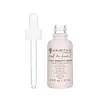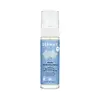What's inside
What's inside
 Key Ingredients
Key Ingredients

 Benefits
Benefits

 Concerns
Concerns

 Ingredients Side-by-side
Ingredients Side-by-side

Water
Skin ConditioningButylene Glycol
HumectantPanthenol
Skin ConditioningSodium Benzoate
MaskingPolysorbate 20
EmulsifyingPotassium Sorbate
PreservativeSodium PCA
HumectantXanthan Gum
EmulsifyingDisodium EDTA
Citric Acid
BufferingEucalyptus Globulus Leaf Oil
PerfumingCaffeine
Skin ConditioningBiotin
AntiseborrhoeicRosmarinus Officinalis Leaf Oil
MaskingSodium Hydroxide
BufferingNicotiana Benthamiana Hexapeptide-40 Sh-Polypeptide-86
Nicotiana Benthamiana Hexapeptide-40 Sh-Polypeptide-9
Nicotiana Benthamiana Octapeptide-30 Sh-Oligopeptide-2
Skin ConditioningWater, Butylene Glycol, Panthenol, Sodium Benzoate, Polysorbate 20, Potassium Sorbate, Sodium PCA, Xanthan Gum, Disodium EDTA, Citric Acid, Eucalyptus Globulus Leaf Oil, Caffeine, Biotin, Rosmarinus Officinalis Leaf Oil, Sodium Hydroxide, Nicotiana Benthamiana Hexapeptide-40 Sh-Polypeptide-86, Nicotiana Benthamiana Hexapeptide-40 Sh-Polypeptide-9, Nicotiana Benthamiana Octapeptide-30 Sh-Oligopeptide-2
Water
Skin ConditioningAloe Barbadensis Leaf Juice
Skin ConditioningPolysorbate 20
EmulsifyingCantharellus Cibarius Extract
Skin ConditioningBiotin
AntiseborrhoeicPanthenol
Skin ConditioningCaffeine
Skin ConditioningHydrolyzed Wheat Protein
Skin ConditioningRosmarinus Officinalis Leaf Oil
MaskingMentha Piperita Oil
MaskingEucalyptus Globulus Leaf Oil
PerfumingMentha Viridis Leaf Oil
AstringentMelaleuca Alternifolia Leaf Oil
AntioxidantRicinus Communis Seed Oil
MaskingMenthol
MaskingInulin
Skin ConditioningMenthone
PerfumingGlycerin
HumectantHydroxyethylcellulose
Emulsion StabilisingCaprylic/Capric Triglyceride
MaskingSodium Phytate
Fructose
HumectantEthylhexylglycerin
Skin ConditioningPhenoxyethanol
PreservativeWater, Aloe Barbadensis Leaf Juice, Polysorbate 20, Cantharellus Cibarius Extract, Biotin, Panthenol, Caffeine, Hydrolyzed Wheat Protein, Rosmarinus Officinalis Leaf Oil, Mentha Piperita Oil, Eucalyptus Globulus Leaf Oil, Mentha Viridis Leaf Oil, Melaleuca Alternifolia Leaf Oil, Ricinus Communis Seed Oil, Menthol, Inulin, Menthone, Glycerin, Hydroxyethylcellulose, Caprylic/Capric Triglyceride, Sodium Phytate, Fructose, Ethylhexylglycerin, Phenoxyethanol
Ingredients Explained
These ingredients are found in both products.
Ingredients higher up in an ingredient list are typically present in a larger amount.
Biotin is a B vitamin that is naturally produced by our bodies. It is also called Vitamin H.
Our bodies use biotin in the metabolism process. It also helps our bodies use enzymes and move nutrients around. A biotin deficiency can lead to brittle hair and nails.
More research is needed on applying biotin topically. However, taking biotin orally has been shown to help nourish the skin, hair, and nails. They play a role in forming skin-hydrating fatty acids.
Biotin is water-soluble. It can be found in foods such as fish, eggs, dairy, nuts, and meat. Vitamin H stands for "haar" and "haut". These are the German words for hair and skin.
Learn more about BiotinCaffeine is most associated with coffee, tea, and cacao. In skincare, it helps with calming inflammation and is rich in antioxidants.
While caffeine is used to treat cellulite and and dark circles, further studies are needed to prove this. It has been believed to help with these skin conditions due to its ability to dilate blood vessels and increase blood flow.
Some studies are looking into caffeine's ability to protect against UV rays.
Learn more about CaffeineThis oil is derived from the leaves of Eucalyptus Globulus, a type of Eucalyptus tree native to Australia.
Though this oil shows antibacterial and antioxidant activity, it is also a known skin-irritant due to its fragrance components.
Panthenol is a common ingredient that helps hydrate and soothe the skin. It is found naturally in our skin and hair.
There are two forms of panthenol: D and L.
D-panthenol is also known as dexpanthenol. Most cosmetics use dexpanthenol or a mixture of D and L-panthenol.
Panthenol is famous due to its ability to go deeper into the skin's layers. Using this ingredient has numerous pros (and no cons):
Like hyaluronic acid, panthenol is a humectant. Humectants are able to bind and hold large amounts of water to keep skin hydrated.
This ingredient works well for wound healing. It works by increasing tissue in the wound and helps close open wounds.
Once oxidized, panthenol converts to pantothenic acid. Panthothenic acid is found in all living cells.
This ingredient is also referred to as pro-vitamin B5.
Learn more about PanthenolPolysorbate 20 is made by combining ethoxylation of sorbitan, ethylene oxide, and lauric acid. It is a mild cleansing agent, surfactant, and emulsifier.
As a surfactant, it helps collect dirt and oils for washing. Emulsifiers prevent oils and water from separating.
Polysorbate 20 also adds scent to a product. Since it is made using sorbitol, it has a sweet scent. Sorbitol can also be found in fruits such as apples and peaches.
The lauric acid used to create Polysorbate 20 is often derived from coconuts.
Polysorbate 20 may not be fungal acne safe.
Learn more about Polysorbate 20Rosmarinus Officinalis Leaf Oil is oil expressed from the leaves of the rosemary plant.
Rosemary Leaf Oil is a fragrance and helps give your product a scent. If you are sensitive to irritating fragrances, this one contains camphor. Camphor has been found to irritate skin.
This oil also contains antioxidant and antimicrobial properties. As an antioxidant, it may protect you skin against damage. This can help slow down the signs of aging.
Learn more about Rosmarinus Officinalis Leaf OilWater. It's the most common cosmetic ingredient of all. You'll usually see it at the top of ingredient lists, meaning that it makes up the largest part of the product.
So why is it so popular? Water most often acts as a solvent - this means that it helps dissolve other ingredients into the formulation.
You'll also recognize water as that liquid we all need to stay alive. If you see this, drink a glass of water. Stay hydrated!
Learn more about Water